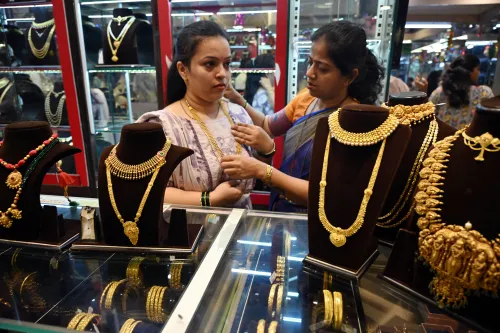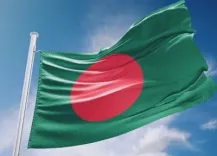Gateway of India in Mumbai Celebrates a Century of History
Mumbai, Dec 4 (NationPress) The renowned Gateway of India, a prominent symbol of Mumbai situated on the Arabian Sea at Colaba, has reached a significant milestone, marking its 100th anniversary on Wednesday. This monumental structure was constructed to commemorate the historic visit of King George V and Queen Mary of Great Britain in 1911.
To celebrate this remarkable occasion, Amitabh Singh, the Chief Postmaster General of Maharashtra, unveiled a Commemorative Special Cancellation and a Picture Postcard in the presence of notable officials including Manoj Kumar, Abhijeet Bansore, Sudhir Jakhere, and Yadagiri Nyalapalli.
Singh remarked, "This special cancellation and postcard aim to celebrate the 100-year legacy of the Gateway of India, highlighting the monument's stunning architecture and historical significance. It serves as a tribute to this national treasure, encapsulated in a beautifully designed postcard that offers a glimpse into its rich history."
Highlighting the importance of preserving India’s history through philately, Singh pointed out that this special release, available at the Mumbai Philately Bureau, is a must-have for collectors, historians, and anyone interested in the country’s cultural heritage.
The majestic monument was erected to mark the landing of King George V on December 2, 1911, prior to his coronation as the Emperor of India, making it the first visit by a British monarch to India, which was then a British colony.
Construction began in March 1913 and took 11 years to complete, culminating in its inauguration on December 4, 1924. The structure, designed in Indo-Islamic and Gujarati architectural styles, is located on the shores of the Arabian Sea.
The Gateway of India stands directly across from the famous Hotel Taj Mahal Palace, which opened its doors in 1903 and was already two decades old at the time.
Designed by Scottish architect George Wittet, who arrived in India in 1904 and later became the first President of the esteemed Indian Institute of Architects in 1917, the Gateway is a grand memorial arch made of basalt, reaching a height of 85 feet and resembling a triumphal arch found in various countries.
After its inauguration by the then Viceroy of India, Rufus D. Isaacs, on December 4, 1924, the monument was opened to the public, quickly becoming a popular tourist attraction and serving as a ceremonial entrance for distinguished visitors and dignitaries.
Months after India’s Independence on August 15, 1947, the last contingent of British soldiers, the Somerset Light Infantry, departed through the Gateway of India on February 28, 1948, accompanied by a 21-gun salute, signaling the conclusion of British rule in India.
Since gaining independence, the Gateway of India has remained a leading tourist destination in Mumbai, recognized as one of the most-photographed monuments, attracting thousands of visitors each day who come to admire its beauty against the backdrop of the Arabian Sea.
Surrounded by five jetties, many enthusiastic tourists and locals embark on harbor rides in motorboats, venturing to the UNESCO-listed Elephanta Islands, located approximately 10 km off Mumbai. From the Arabian Sea, visitors can view both the Gateway of India and the Hotel Taj Mahal Palace in a single stunning scene.
Notably, both sites were targets during the November 26, 2008, terrorist attacks in Mumbai, but fortunately, they sustained no significant damage. Following the incident, strict security measures have been implemented in the area.
Wittet, renowned for his creation of the Gateway of India, also contributed several other significant structures to Mumbai, including the Chhatrapati Shivaji Maharaj Vastu Sangrahalaya (formerly the Prince of Wales Museum), the Institute of Science, KEM Hospital, the Small Causes Court, Bombay House (Tata Group headquarters), Wadia Hospital, and many more, all located in South Mumbai.
(Quaid Najmi can be contacted at: qnajmi@gmail.com)









